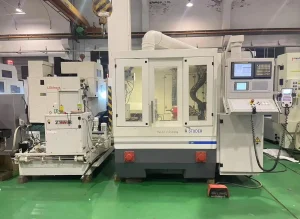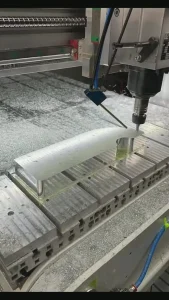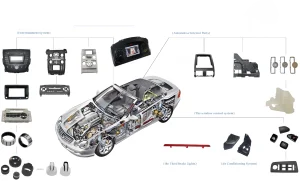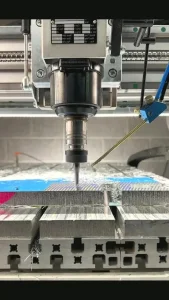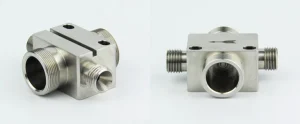CNC 4-axis machining refers to the fourth-axis rotary milling process on CNC machine tools. It adds a rotary axis (A-axis) to three-axis (X, Y, Z) machining. The addition of a fourth axis allows the tool to cut on a circular path, enabling more complex machining tasks and improving processing speed and accuracy.
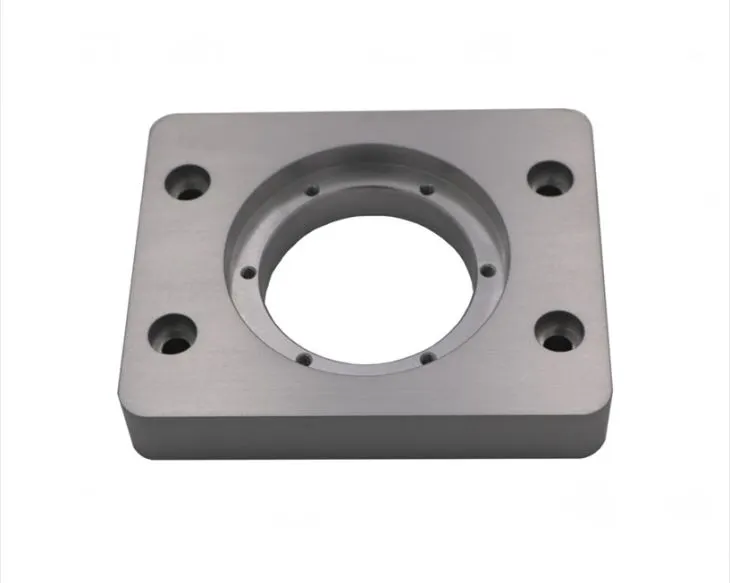
CNC 4-Axis Machining
The CNC 4-axis machining technical standard has the following requirements:
- Safety Procedures
- Follow the machining center’s safety operating procedures to ensure that machine tool operations comply with safety regulations.
- Protective Equipment
- Before work, workers must wear protective equipment as required.
- Cuffs must be tied.
- Scarves, gloves, ties, and aprons are prohibited.
- Female workers should tuck their braids into their hats.
- Pre-Start Checks
- Prima di iniziare, check that the CNC blade compensation, CNC precision part zero point, and product workpiece zero point are correct.
- Machine and Program Checks
- The relative positions of all buttons must comply with the specified operating procedures.
- Carefully write and input CNC machine programs.
- Check the operating conditions of the equipment’s safety systems, fuses, signals, parts, marcia, electrical equipment, hydraulics, and digital displays.
- Only start operation when all systems are functioning normally.
- Test Run
- Before operation, CNC precision parts should undergo a test run.
- Lubrication, mechanical, electrical, hydraulic, and digital display systems should be checked for proper function.
- Cutting operations should only begin when all systems are functioning normally.
- Operational Prohibitions
- Operators are prohibited from touching moving workpieces, CNC blades, or rotating parts.
- It is strictly prohibited to transfer or remove tools or other objects through rotating parts of CNC precision parts.
- Adjustment and Cleaning
- The machine must be parked when adjusting CNC precision parts, clamping workpieces and CNC blades, or cleaning CNC precision parts.
- Tools or other objects should not be placed on the machine, operating cabinet, or protective cover.
- Do not remove pins directly with your hands; use specialized tools to clean them.
- Handling Abnormalities
- If any abnormality or alarm is detected, the machine should be parked immediately and have personnel inspected.
- Never leave your workstation while CNC precision parts are being processed.
- If leaving for any reason, return the workbench to the center, return the toolholder, park the machine, and disconnect the power to the main machine.

Conclusione
The above standard requirements are intended to ensure the safety and stability of the CNC four-axis machining process, as well as the accuracy and precision of the machining results. Please note that specific requirements may vary depending on the specific model and configuration of the machining center. Please adjust and comply accordingly.

